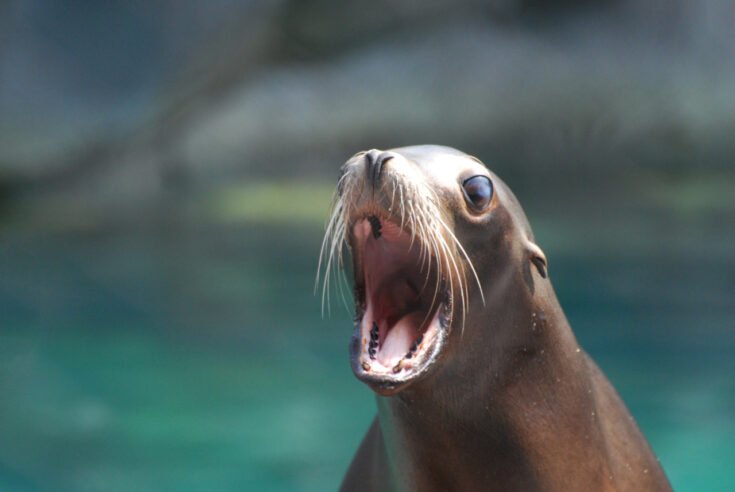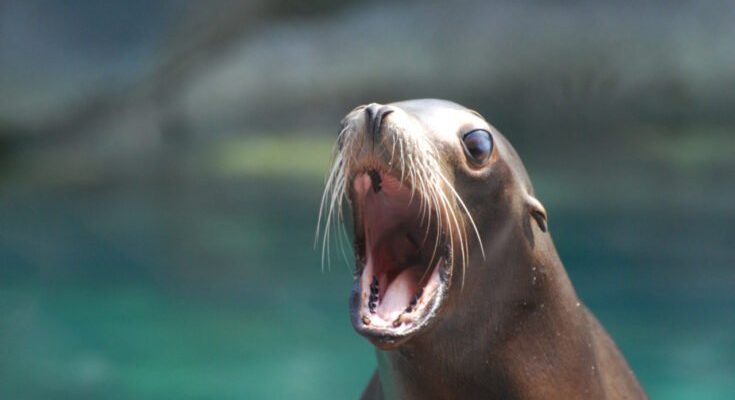
Understanding the Sea Lion’s Diet
Sea lions are carnivorous mammals, meaning they primarily consume meat. Their diet consists mainly of fish, but they won’t hesitate to chow down on squid or crustaceans when the opportunity arises. Some common fish in a sea lion’s diet include sardines, herring, and anchovies. Imagine being able to choose from a buffet of delicious options—you can see why these creatures thrive in their environments.
Sea lions are opportunistic feeders. This means they adapt their diet based on what’s available. For example, during certain seasons, schools of fish may migrate, and sea lions follow them, almost like a culinary road trip in search of the best meals. Their ability to adapt is vital for their survival, especially as changes in ocean temperature and food availability happen.
Here’s the thing: these animals need a lot of energy to maintain their bodies and keep warm in cold waters. Adult sea lions can eat between 5% to 10% of their body weight daily. For a sea lion weighing around 800 pounds, that’s about 40 to 80 pounds of fish! Their large appetite is essential for maintaining their health and ensuring they have enough energy for their active lives.
How Sea Lions Hunt for Food
Hunting is a critical part of a sea lion’s life, and they have developed some pretty impressive techniques. These animals are agile swimmers, using their strong front flippers to propel themselves through the water with grace. They can dive up to 600 feet deep and hold their breath for around 20 minutes! Imagine the thrill as they plunge into the depths, searching for their next meal.
Most sea lions hunt in groups, which is like having a well-coordinated team. They can herd schools of fish together, making it easier to catch their dinner. This teamwork improves their chances of a successful hunt significantly. Think of it as a synchronized swimming routine—only instead of performing, they’re catching lunch.
They also use their excellent eyesight and acute hearing to spot prey. When searching for food, sea lions rely on their senses to detect movement and sounds beneath the surface. When they see a fish darting away, they’re instantly alerted, allowing them to chase it down with speed and agility.
Feeding Habits of Sea Lion Pups
Sea lion pups have different needs than adults. At birth, they primarily rely on their mother’s milk, which is rich in nutrients and helps them grow quickly. This initial diet is crucial; it provides the energy and fats they need to develop their bodies and blubber. Imagine a tiny diner waiting for a nourishing meal to fuel its growth.
As they grow older, pups start to accompany their mothers during hunts, observing and learning how to catch food. Sea lion mothers are excellent teachers. They help their pups transition from a milk-based diet to solid food. By the time they’re about six months old, pups begin to hunt for themselves, though they still rely on their mothers for guidance.
It’s fascinating to see how these young sea lions adopt dietary habits based on their environment and what they observe. They learn not just to survive but to thrive, quickly adapting to the availability of different prey and the best hunting techniques.
Seasonal Changes in Diet
Sea lions are not just creatures of habit; they adjust their diets according to seasonal changes. Depending on the time of year, certain fish may be more abundant, leading to changes in their eating patterns. For example, during the summer months, schools of sardines and anchovies might be plentiful, prompting sea lions to feast on these fish.
Conversely, in the colder months, when fish are scarcer, sea lions may turn to squid and other available options. This adaptability is crucial for their survival. Just like we might change our meals based on what’s in season or what we can find at the grocery store, sea lions have to be resourceful.
These seasonal variations can also provide insights into the overall health of marine ecosystems. If sea lions struggle to find food, it might indicate larger environmental issues at play, such as overfishing or climate change. The health of sea lion populations often reflects the state of the ocean.
The Impact of Human Activity on Sea Lion Diets
Human activity has a significant impact on ocean ecosystems, and, by extension, on sea lions and their diets. Overfishing has led to declines in fish populations that sea lions rely on. When fish stocks dwindle, sea lions have to travel farther or expend more energy to find food, which can affect their health and reproduction.
Pollution also poses threats to their food sources. Contaminants in the water can accumulate in fish, making them unsafe for sea lions to eat. This not only harms sea lions but can also disrupt the entire food chain. It’s important to recognize that our actions can significantly affect the health of marine wildlife.
Conservation efforts are crucial for ensuring that sea lions have access to healthy food sources. Protecting their habitats and managing fish stocks sustainably can help maintain balanced ecosystems. By taking care of the ocean, we’re also taking care of the creatures that call it home.
In summary, the diet and feeding habits of sea lions are vital for their survival and health. They have developed impressive hunting skills and adapt their diets based on the availability of prey. Just like us, sea lions are creatures of habit, but they also know how to switch things up when the situation calls for it.
Understanding what sea lions eat and how they hunt helps us appreciate their role in the ocean ecosystem. With increasing human impacts on marine life, it’s essential to support conservation efforts that protect these magnificent animals. After all, ensuring that sea lions can find their favorite meals is critical for maintaining the balance of our oceans. So next time you think of sea lions, picture them diving through the waves, on the hunt for their next delightful catch.

